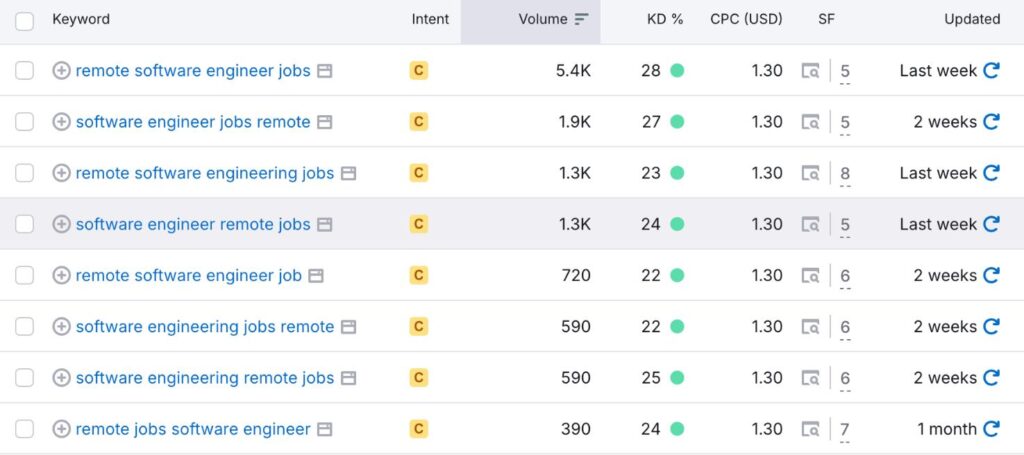SEO for Recruitment: Essential Tips to Boost Your Talent Marketing Strategy
Search engine optimization (SEO) isn’t just for consumer marketing—it’s a vital part of recruitment marketing. If your job descriptions, career site, or culture content aren’t appearing in relevant search results, you’re likely missing out on prospective candidates.
Understanding and applying SEO for recruitment ensures your brand is discoverable by the right talent at the right time. In this article, we’ll explore why your talent marketing efforts can benefit from an SEO strategy and actionable steps to improve your career site’s performance in search engines.
Why SEO Matters in Recruiting
Both active and passive job seekers today start their journey on search engines. Whether they’re Googling “best places to work in tech” or “remote marketing jobs with flexibility,” your career site content needs to be optimized to show up in those searches.
SEO for recruitment increases visibility, drives qualified traffic to your site, and improves the overall effectiveness of your employer brand efforts.
Core Strategies for SEO Optimization in Recruitment
1. Build and Optimize Long-Form Career Content
Google rewards high-quality, long-form content that thoroughly answers user questions. Blog posts, employee stories, and FAQs are natural ways to deliver this content. Aim for 1,500–2,000 words per post and center each one around a specific keyword phrase related to your talent goals (like “sales jobs at [Company]” or “inclusive culture at tech companies”).
When creating blog posts, landing pages, or even a job description, include the target keyword (e.g., “sales jobs at [Company]”) in as many places as possible. Some ideal locations are:
- The page title
- The first paragraph
- H2 or H3 subheadings
- Image alt text
- Meta descriptions
2. Post Consistently to Stay Competitive in Search
Consistency is key for maintaining strong search rankings. Search engines prioritize sites that are regularly updated. For career site blogs, aim to publish at least two monthly posts. Short posts like employee spotlights, FAQs, or event recaps can signal activity and relevance to search engines.
3. Refresh and Reuse High-Performing Content
Instead of always starting from scratch, regularly update existing high-performing pages to maintain or improve rankings. Check for outdated links, refresh language to align with current priorities, and enhance formatting for better readability. Then republish with a current date to signal freshness to search engines.
4. Strategically Use Internal and External Links
Link to related content within your careers site to improve the SEO authority of your most valuable pages. Also include links that guide users to job postings, event sign-up forms, or culture videos, supporting both SEO and candidate conversion goals.
Keep links relevant and helpful, and use descriptive language for hyperlinks. Instead of a vague “learn more” link, use something like “see all our open sales jobs”.
5. Conduct and Apply Keyword Research (Especially for Job Descriptions)
Knowing which search terms candidates use is key to optimizing your content. Use keyword research to align your site structure, content, and headlines with the language your candidates actually use.
You want to focus on keywords that match user intent, like “working at [Company],” “DEI in tech companies,” or “internship programs for new grads.” This is even more important for job postings so that your job ads show up in search results across different channels. If you are hiring software engineers, make sure your job description title includes “software engineer,” not an internal title that a candidate wouldn’t search for.
There are various online tools (both paid and free) that can help with your keyword research. A platform like Google Search Console shows you what search terms are leading people to your pages. And a tool like SemRush can help you search for new keywords to see how often they are used and the difficulty of ranking for that keyword.

In the Semrush example above, you can see there is a 5,000+ search volume for “software engineering remote jobs” but a keyword difficulty of 28% to rank for that term. That’s a large volume of searches for a low difficulty keyword. If you have remote software engineering jobs, it’s time to start optimizing those keywords on your career site!
Tip: Talk to your marketing team. They likely use SEO tools on a regular basis and can help you with keyword research!
6. Don’t Forget Meta Descriptions
Each blog post or landing page should include a custom meta description using your primary keywords. This blurb appears in search results and influences whether a user clicks. Make it engaging, relevant, and within 155 characters.
Optimizing for AI-Powered Searches
As job seekers turn to AI assistants and generative search tools like ChatGPT, Perplexity, and Google’s AI Overviews, your SEO recruiting strategies need to evolve beyond traditional search engines.
AI tools are becoming gateways to content. Instead of clicking through multiple search results, users get summarized answers, and those summaries are pulled from well-structured, authoritative, and clear content. If your career site content isn’t optimized for this new behavior, it may never make it into the AI-generated response.
Here are four ways to optimize your recruitment marketing content for AI search experiences.
- Write in Clear, Natural Language: AI tools prioritize content that directly and clearly answers user queries. Make your blog posts, job descriptions, and career pages:
- Easy to read and understand
- Structured with question-based headings (e.g., “What’s it like to work in our engineering team?”)
- Free of fluff, jargon, or overly branded language
- Answer Candidate Questions Directly: Include Q&A sections or FAQs within your content using natural phrasing to mimic the way users ask questions in AI tools. Some examples include:
- “What benefits do employees receive at [Company]?”
- “Is [Company] remote-friendly?”
- Publish Authoritative, Expert-Backed Content: AI models prioritize trustworthy, credible content. Use employee quotes, cite sources, and include first-hand experiences that showcase your employer brand in an authentic and useful way.
- Optimize for Featured Snippets: Featured snippets (those boxes that appear at the top of Google results) are often the same content AI tools summarize. To optimize for snippets:
- Answer common candidate questions in 2–4 sentence blocks
- Use lists and bullet points when possible
- Include relevant keywords naturally
Make Your Content Visually Engaging
SEO may bring candidates in, but visuals and storytelling keep them engaged and drive conversions.

Here’s how to enhance the on-page experience:
- Use employee images, not stock photos
- Embed short-form videos throughout your career site pages and job descriptions, especially employee stories or “day in the life” clips
- Add infographics summarizing your hiring process, DEI initiatives, or perks
- Use testimonials and pull quotes from real employees to break up content and add authenticity
Final Thought: Build SEO Into Your Recruitment Marketing Workflow
SEO for recruitment isn’t a one-time task—it’s a continuous process. As your roles evolve, job markets shift, and candidate preferences change, so should your content and keyword strategy.
By integrating SEO into your recruitment marketing from the ground up, you’ll ensure your brand stays visible, relevant, and competitive in attracting top talent.

